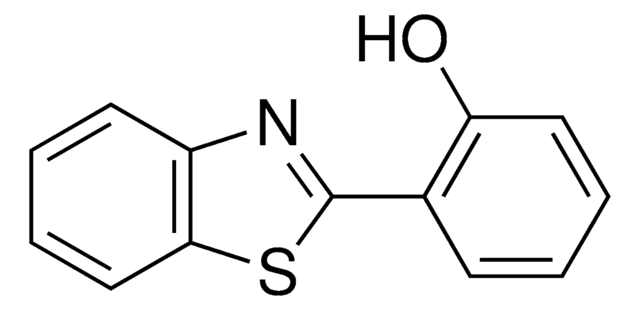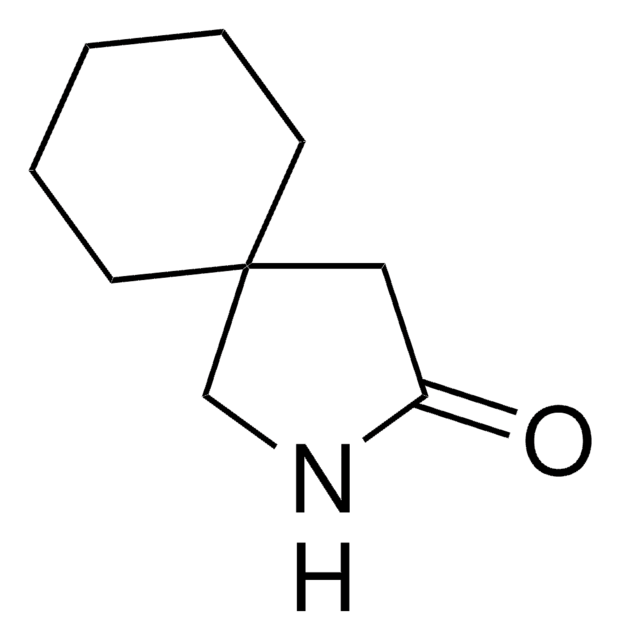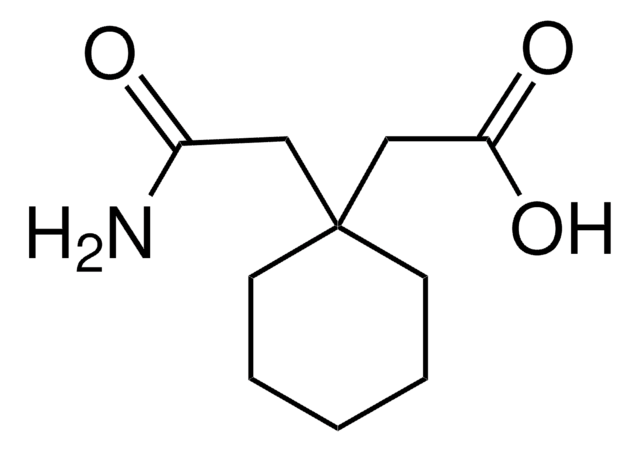All Photos(2)
About This Item
Empirical Formula (Hill Notation):
C13H9NS
CAS Number:
Molecular Weight:
211.28
EC Number:
MDL number:
UNSPSC Code:
12352100
PubChem Substance ID:
NACRES:
NA.22
Recommended Products
Assay
97%
form
solid
mp
111-113 °C (lit.)
SMILES string
c1ccc(cc1)-c2nc3ccccc3s2
InChI
1S/C13H9NS/c1-2-6-10(7-3-1)13-14-11-8-4-5-9-12(11)15-13/h1-9H
InChI key
XBHOUXSGHYZCNH-UHFFFAOYSA-N
Looking for similar products? Visit Product Comparison Guide
Related Categories
Application
2-Phenylbenzothiazole was used in the synthesis of two novel orange iridium(III) complexes, (bis[2-(biphenyl-3-yl)benzothiazole-N,C2′]iridium(III)(acetylacetonate) and bis[2-(4′-methoxybiphenyl-3-yl)benzothiazole-N,C2′]iridium(III) (acetylacetonate).
Storage Class Code
11 - Combustible Solids
WGK
WGK 3
Certificates of Analysis (COA)
Search for Certificates of Analysis (COA) by entering the products Lot/Batch Number. Lot and Batch Numbers can be found on a product’s label following the words ‘Lot’ or ‘Batch’.
Already Own This Product?
Find documentation for the products that you have recently purchased in the Document Library.
Customers Also Viewed
Rupam Sarma et al.
Spectrochimica acta. Part A, Molecular and biomolecular spectroscopy, 77(1), 126-129 (2010-06-16)
The UV-visible and fluorescence properties of hydroxy substituted benzothiazole derivatives change on interactions with zinc(II), cadmium(II) and mercury(II) ions. The binding of 2-(2'-hydroxyphenyl)benzothiazole is specific to zinc(II) over cadmium(II) and mercury(II). Similar type of interactions of zinc(II), cadmium(II) and mercury(II)
Stamatia Tzanopoulou et al.
Inorganic chemistry, 45(2), 902-909 (2006-01-18)
The reaction of 2-(2'-pyridyl)benzothiazole, [NN], with the ReO(V)(3+) and TcO(V)(3+) cores in the presence of thiophenols, [S] (RC(6)H(4)SH, R = H, 4-CH(3), 4-OCH(3)), as coligands led to the isolation of hexacoordinated complexes of the MO[NN][S](3) type (M = Re, Tc).
Ming Li et al.
Dalton transactions (Cambridge, England : 2003), 40(27), 7153-7164 (2011-06-15)
Four novel iridium(III) complexes bearing biphenyl (7a-7c) or fluorenyl (7d) modified benzothiazole cyclometallate ligands are synthesized. In comparison with the yellow parent complex, bis(2-phenylbenzothiozolato-N,C(2')) iridium(III) (acetylacetonate) [(pbt)(2)Ir(acac)] (λ(PLmax) = 557 nm, φ(PL) = 0.26), 7a-7d show 20-43 nm bathochromic shifted
P Ivanov et al.
Journal of fluorescence, 22(6), 1501-1507 (2012-07-10)
The parent study includes synthesis end photophysical characterization of four new phosphorescent cyclometalated iridium (III) complexes. The cyclometaled ligands used here are 2-(4-chlorophenyl)benzo[d]thiazole, 2(4isopropylphenyl)benzo[d] thiazole, 2-(4-methoxyphenyl)benzo[d]thiazole, 4-(benzo[d]thiazol-2-yl)-N,N-dimethylaniline. The auxiliary ligand is acetylacetone (Hacac). The photometric analyses show temperature dependence on
Jun Dai et al.
Dalton transactions (Cambridge, England : 2003), 42(29), 10559-10571 (2013-06-14)
By introducing a phenyl substituent into the meta-site of the phenyl segment of the 2-phenylbenzothiazole ligand, two novel orange iridium(III) complexes, namely, (3Phbt)2Ir(acac) and (3OMePhbt)2Ir(acac), have been synthesized. Compared with their parent compound (bt)2Ir(acac), both of them possess much enhanced
Our team of scientists has experience in all areas of research including Life Science, Material Science, Chemical Synthesis, Chromatography, Analytical and many others.
Contact Technical Service












